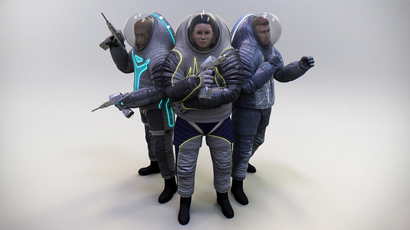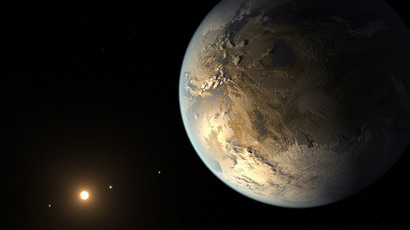Galaxy possibly teeming with 100 million life-sustaining planets

Forget close encounters of a third kind. Imagine galactic encounters with millions of planets in the Milky Way galaxy, each of them overflowing with complex life forms. A new study says it’s a possibility.
Although researchers are nearly unanimous in the belief that some
other life forms exist in the great expanse of outer space, the
worlds that any intelligent life forms inhabit are probably too
distant for any human-alien meetings in the near future.
“On the one hand, it seems highly unlikely that we are
alone,” said Louis Irwin, professor emeritus at the
University of Texas at El Paso and lead author of the study
published in Challenges journal. “On the other hand, we are likely so
far away from life at our level of complexity, that a meeting
with such alien forms is extremely improbable for the foreseeable
future.”
The team of researchers arrived at their conclusions after
examining more than 1,000 exoplanets for particular
characteristics like age, chemistry, density, temperature and
distance from the parent star. From the available information,
the team arrived at a “biological complexity index”
(BCI) that ranges between 0 and 1.0. The index is determined by
“the number and degree of characteristics assumed to be
important for supporting multiple forms of multicellular
life.”

“Planets with the highest BCI values tend to be larger,
warmer, and older than Earth,” added Irwin, “so any
search for complex or intelligent life that is restricted just to
Earth-like planets, or to life as we know it on Earth, will
probably be too restrictive.”
The team gave, by way of example, Europa, a moon of Jupiter
thought to have an ocean below its ice sheet. Irving’s team
estimated that 1 percent to 2 percent of exoplanets would have
conditions more conducive to life than Europa, which actually
turns out to be a rather high percentage given the number of
planets: There are some 10 billion stars in the Milky Way,
averaging one planet a star, which means that about 100 million
planets could sustain some form of complex life.
“This constitutes the first quantitative estimate of the
number of worlds in our galaxy that could harbor life above the
microbial level, based on objective data,” Irwin said.

The primary obstacle for astronomers in proving their theories is
the vast distance between Earth and the next solar system. The
closest is the Gliese 581 system, which is 20 light years away.
One light year is the distance that a beam of light travels in
one year. Since light travels at 186,000 miles per second (or
about 671 million miles per hour), this provides some perspective
on the unfathomable distances being discussed.
The researchers, while unanimous in the belief that some kind of
alien life form exists somewhere in our Milky Way galaxy, admit
that these life forms are most likely wildly different from our
own.
“Other planets could harbor forms of life unknown to us, or
forms quite extremophilic in relation to life on Earth, under
conditions and on planetary bodies very different from
Earth.”















